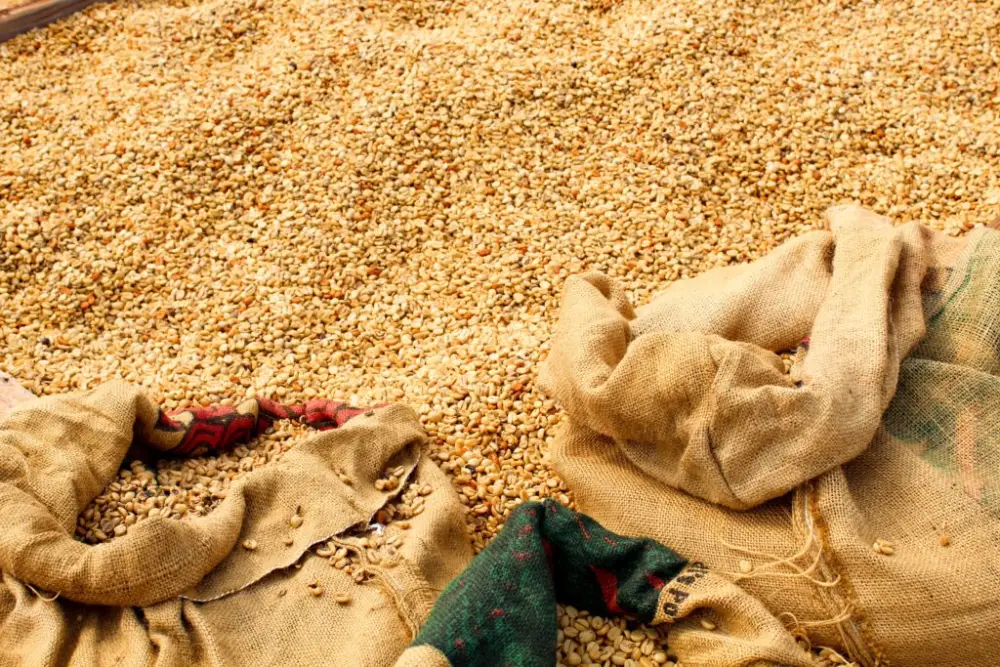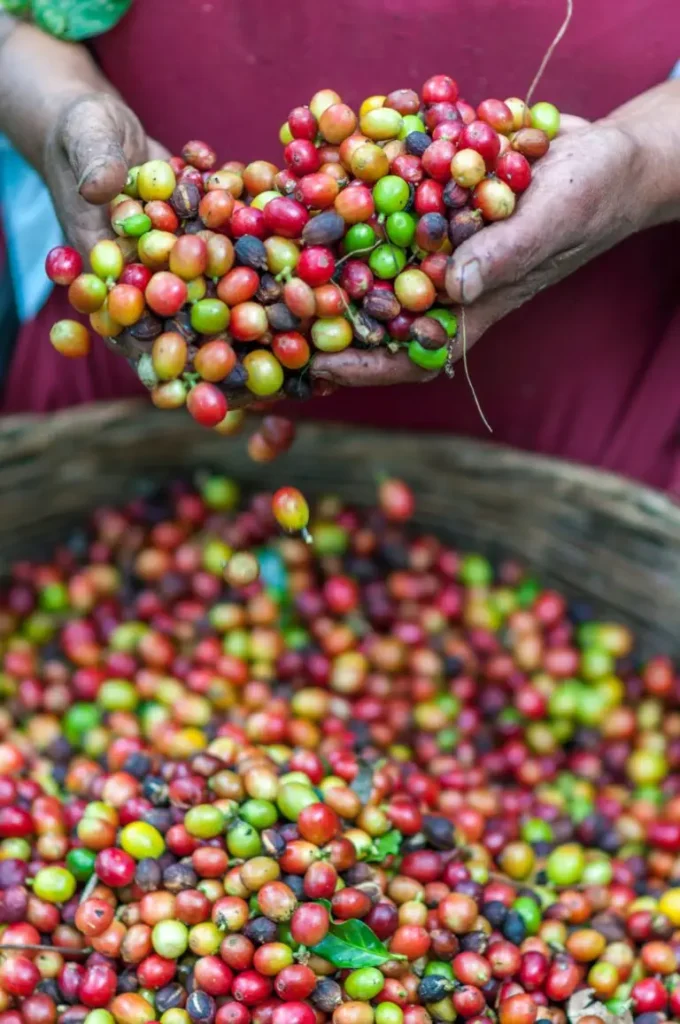Coffee Processing Methods
- Home
- Coffee Processing Methods
Post-harvest processing is the stage of the coffee process in which producers remove the outer layers of the coffee cherry to expose the green coffee beans that we then roast. There are a number of different processing methods, but the most common are natural (dry) and washed (wet) processing.
Natural Processing or Dry Process
The simplest and oldest way to process coffee is natural processing, also known as dry processing. As the name suggests, this process does not make use of large amounts of water and very rarely is any type of machinery used.
In this method, the whole cherry – with its pulp, mucilage, husk and all – is dried in the sun or in industrial tumble driers, right after being harvested. If sun dried, the process can take up to four weeks, and a fair amount of fermentation occurs in the fruit during this time.
After cherries are dry enough, they are hulled in a machine to remove all the layers that cover the green coffee bean.

Washed Coffee or Wet Process
As the name suggests, the wet process uses water, a lot of it.
In the wet method, before the beans are dried, the outer skin or pulp of the coffee cherries is first removed with a machine called a depulper. Afterwards, the depulped beans are fermented for 12 to 48 hours in large tanks of water. During this fermentation, different bacteria, yeasts and fungi break down the sugars and other compounds in the mucilage making it softer and easier to remove.
After fermenting the beans, the softened mucilage is finally removed by “washing” them with large amounts of water. As a consequence these beans are called Washed Coffee Beans.

Natural
- Heavy body
- Sweet, smooth and complex attributes
- Fruity taste
Washed
- Pronounced acidity
- Pronounced Aroma
- Less Astringency


